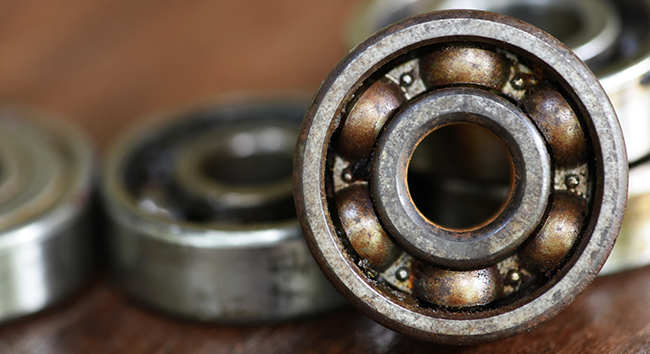All About Additives – Anticorrosion & Antirust
Corrosion is defined as the destructive alteration of metal by a chemical or electrochemical reaction between the metal and its environment, resulting in change and weakening of the metal’s properties.

Corrosion is a process, not a property. All metals except the noble metals are unstable under atmospheric conditions which allows them to be converted into their oxidized form. There are two primary types of corrosion; electrochemical corrosion and chemical corrosion.
Electrochemical corrosion involves the reaction of ferrous (iron-based) metal or its alloys in a two-step process in the presence of an electrolyte, most typically water or moisture. The result of this reaction is commonly known as rust. Rust inhibitors are added to a grease or oil to slow corrosion of iron alloys. These additives physically adsorb onto the metal surface, blocking the surface of the metal from the effects of water, acids and air that would result in rust.
Chemical corrosion involves the attack of aggressive chemical species like acids, bases, and sulfur. This is often the result of the oxidation of hydrocarbons and sulfur-containing additives or additive by-products, on a metal surface or metal oxide layer resulting in the formation of ionic metallic or oxidized metallic compounds. Unlike electrochemical corrosion, chemical corrosion does not require an electrolyte like water and can occur both in organic and aqueous environments.
Corrosion inhibitors slow the corrosion process of metal components. The inhibitors form an inactive film on the metal surface by complexing with metallic ions at the surface. Some corrosion additives work by neutralizing corrosive acids formed from oil and additive degradation byproducts.
Corrosion Testing
Nye’s R&D and Applications laboratories have the capability to run all of these tests to best predict the performance in your application to ensure the protection that you need.There are several other methods for measuring corrosion, such as the Fog Spray Test (ASTM B-117), Corrosion Rate Evaluation Procedure (CREP), and the Bearing Corrosion Test (ASTM D-1743).
There are several test methods for measuring the ability of a grease to prevent corrosion. The most common is the Copper Corrosion Test (ASTM D-4048). This test measures the tendency of a lubricating grease to corrode copper under specific static conditions. A copper strip is submerged in the grease and placed in an oven for 24 hours at 100°C or 150°C. At the conclusion of the test period, the copper strip appearance is visually compared against the Copper Strip Corrosion Standard and given a corrosion rating.
The EMCOR Test (ASTM D-6138 is used to determine the corrosion protection properties of a grease under dynamic wet conditions of a ball bearing. A grease-filled steel bearing is subjected to distilled water or a salt water composition depending on the intended environmental exposure of the bearing. The bearing is run for one week under alternating dynamic and static conditions. At the end of the test period, the bearing raceway is inspected and given a 0-5 rating with 0 being the best and 5 being the worst.
![]()
EMCOR Test Ratings
|
0 |
No corrosion |
|
1 |
Trace corrosion (no more than 3 spots no larger than 1mm diameter) |
|
2 |
Light corrosion with no more than 1% of the surface corroded |
|
3 |
Moderate corrosion (3-5% of surface is corroded) |
|
4 |
Heavy corrosion (5-10% of surface is corroded) |
|
5 |
Severe corrosion (>10% of surface is corroded) |


